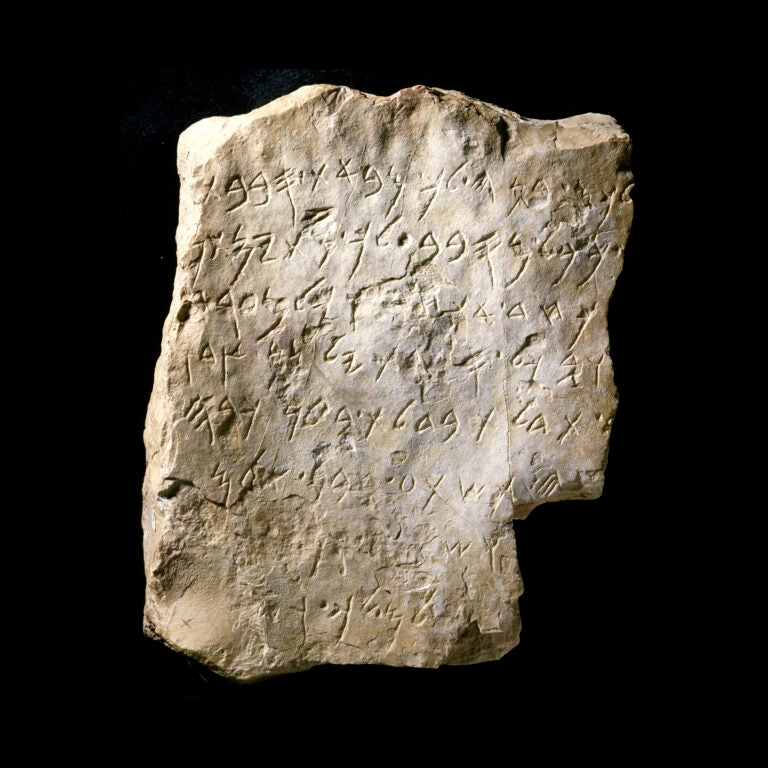Background and Translation
The modern city of Amman, Jordan, sits on the site of ancient Rabbath-ammon, capital of the territory of Ammon. Ammon, located to the northeast of the Dead Sea, between the rivers Arnon and Jabbok, was one of ancient Israel’s neighbors and, quite often, one of her enemies. In Deuteronomy 23:3-6 Ammonites and Moabites are forbidden to enter the “assembly of the LORD,” because they hired Balaam to curse the Israelites as they encamped in the plains of Moab on their way to the land of Canaan, even though the account in Numbers 22-24 does not mention the involvement of the Ammonites.
The Inscription pictured here was found in the 1960’s in the Citadel, or fortress, of Amman, ancient Rabbath-ammon. It is generally believed to be a building inscription, of either a temple or the Citadel itself, although some have suggested that it is an oracle or instruction from the god Milkom, god of the Ammonites. The text contains a number of references to parts of buildings, but also has elements of a curse. If it is a building inscription, it fits into a well-known type of text in the ancient Near East. It was customary when building a large public building to attach a record of who built the structure, why it was built, and to whom the building was dedicated. Because this inscription is incomplete, we cannot be sure of its original purpose.
Translation:
1. Mi]lkom, he has built for you the precinct entrances[
2. ]that all who threaten you shall surely die[
3. ]I shall surely obliterate, and all who enter[
4. ]and amidst all its columns the just will lodge[
5. ]… there will hang from its doors an ornament …[
6. ]… will be offered within its portico
7. ]???
8. ]peace to you and pe[ace… *
The language of the Ammonites is closely related to Hebrew and ancient Phoenician, but the script they used is much closer to the script used for Aramaic at that time. It has been dated to the 9th c. B.C.E.
Photograph by Bruce and Kenneth Zuckerman, West Semitic Research. Courtesy Department of Antiquities, Jordan.

Article Categories
Non-Biblical Ancient Texts Relating to the Biblical World: Non-biblical inscriptions and documents from ancient times that improve our understanding of the world of the Bible.
Biblical Manuscripts: Images and commentary on ancient and medieval copies of the Bible.
Dead Sea Scrolls: Images and commentary on selected Dead Sea Scrolls manuscripts.
USC Archaeology Research Center: Images of artifacts from the teaching collection of the University of Southern California.